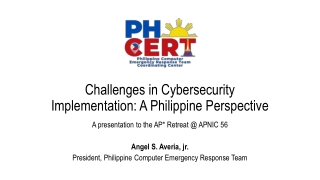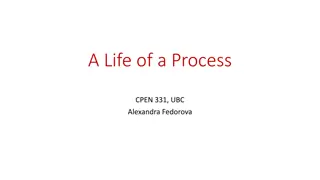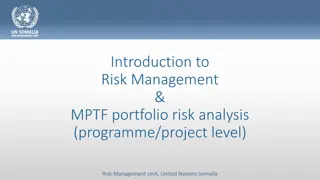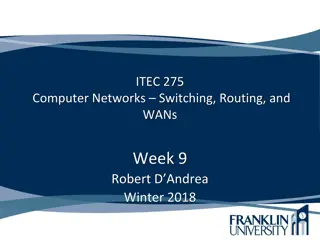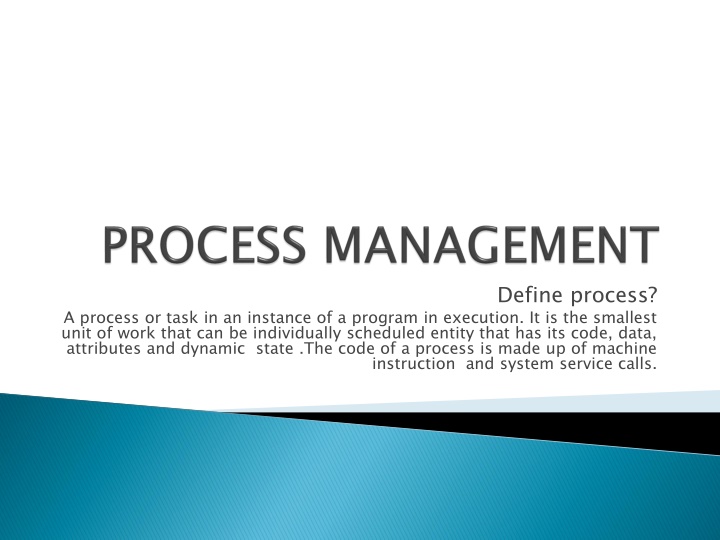
Processes in Operating Systems
Learn about processes in operating systems, which are individual units of work that can be scheduled and managed independently. Explore how processes are created, controlled, and switched, and understand the role of schedulers in optimizing system performance.
Download Presentation

Please find below an Image/Link to download the presentation.
The content on the website is provided AS IS for your information and personal use only. It may not be sold, licensed, or shared on other websites without obtaining consent from the author. If you encounter any issues during the download, it is possible that the publisher has removed the file from their server.
You are allowed to download the files provided on this website for personal or commercial use, subject to the condition that they are used lawfully. All files are the property of their respective owners.
The content on the website is provided AS IS for your information and personal use only. It may not be sold, licensed, or shared on other websites without obtaining consent from the author.
E N D
Presentation Transcript
Define process? A process or task in an instance of a program in execution. It is the smallest unit of work that can be individually scheduled entity that has its code, data, attributes and dynamic state .The code of a process is made up of machine instruction and system service calls.
Each process is an individual entity consisting of codes, data and characterized by attributes and dynamic state. Each process generally passes through four dynamic states.
The operating system groups all the information that it needs about a particular process into a data structure called a process descriptor or a process control block(PCB). Whenever a process is created, the operating system creates a corresponding PCB.
A Scheduler is an operating system module that selects the next job to be admitted into the system and next process to be executed by the CPU . The main duty of the scheduler is to optimize system performance in accordance with the criterion considered important by the system programmers.
Switching the CPU to another process requires saving the state of the outgoing process and loading the saved state for the incoming process. This phenomenon of the process state s saving is known as context switching .
Process can commutative with each other using these two types: 1.Shared Memory 2. Message passing
Preemptive scheduling is one which can be done in the circumstances when a process switches from running state to ready state or from waiting state to ready state . Here, the resources (CPU cycles) are allocated to the limited amount of time and then is taken away, and the process is placed back in the ready queue again if it still has CPU burst time remaining.
There are five types of scheduling algorithms: 1. First come first serve . 2. Shortest job first. 3. Round robin. 4. Multiprocessor scheduling. 5. Real time scheduling.
When several process fulfil the desired work together then all such process must be synchronized properly. In general operating system does not provide any facility or any kind of synchronization operation. These are the cooperating process who themselves carry the burden of proper synchronization.



